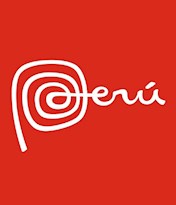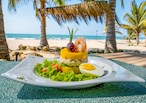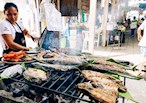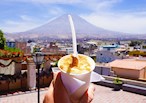Nestled between the Pacific coast and the Amazon rainforest, the Peruvian Andes rise majestically across almost all of Peru. This massive mountain range cradled many ancient civilizations, with the great Inca Empire being the most famous one. Even today, their monumental temples and citadels stand strong against breathtaking backdrops of snow-capped peaks, lush valleys, and serene lakes. These sights, along with a unique gastronomy reliant on local ingredients, lures travelers with a promise of adventure and flavors like no other.
 Andes are popular trekking destination - Credits: Shutterstock
Andes are popular trekking destination - Credits: Shutterstock
Echoes of the past and nature's grandeur
When talking about the Peruvian Andes, the first thing that comes to mind is the Inca Empire and Machu Picchu. Arguably the most famous archaeological site in South America, this ancient Incan citadel is nestled high in the Andes Mountains, some 80 kilometers (about 50 miles) northwest of Cusco. The intricate stone constructions, terraced fields, and panoramic vistas make it a place of wonder, reminding visitors of the sophisticated civilization that once ruled these lands.
 Alpacas are the integral part of all Andean cultures - Credits: Shutterstock
Alpacas are the integral part of all Andean cultures - Credits: Shutterstock
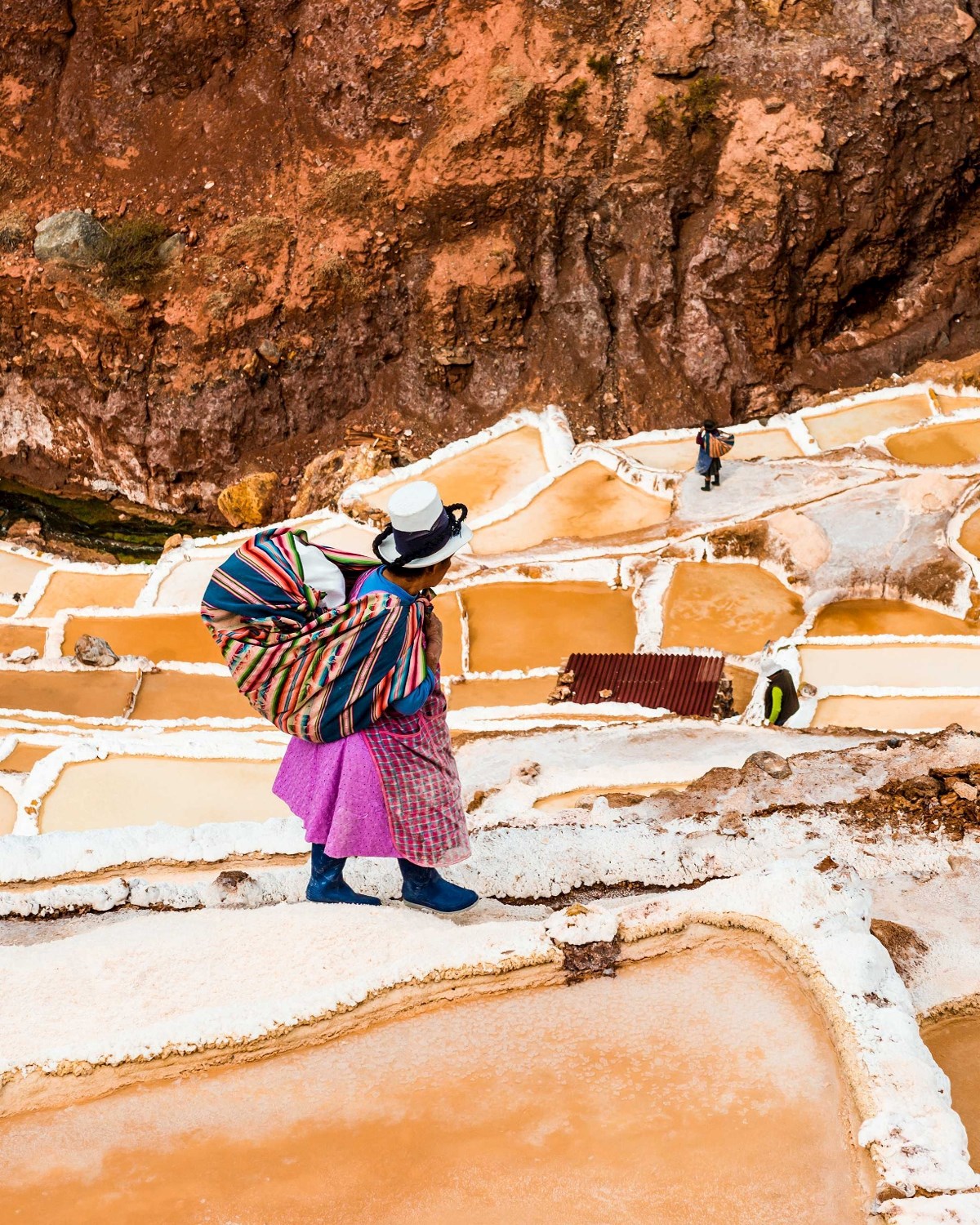 People collect salt from Maras mines the same way their ancestors did - Credits: Shutterstock
People collect salt from Maras mines the same way their ancestors did - Credits: Shutterstock
 Pachamanca is an ancient cooking technique that uses hot stones - Credits: Shutterstock
Pachamanca is an ancient cooking technique that uses hot stones - Credits: Shutterstock
Stretching between Cusco and Machu Picchu is the Sacred Valley, a grassy region dotted with historical sites. Ollantaytambo, once a royal estate of Emperor Pachacuti and a stronghold of the Inca resistance during the Spanish conquests, is an exceptionally preserved city, with its grid-like streets, terrace complex, and water channels standing proudly against the time.
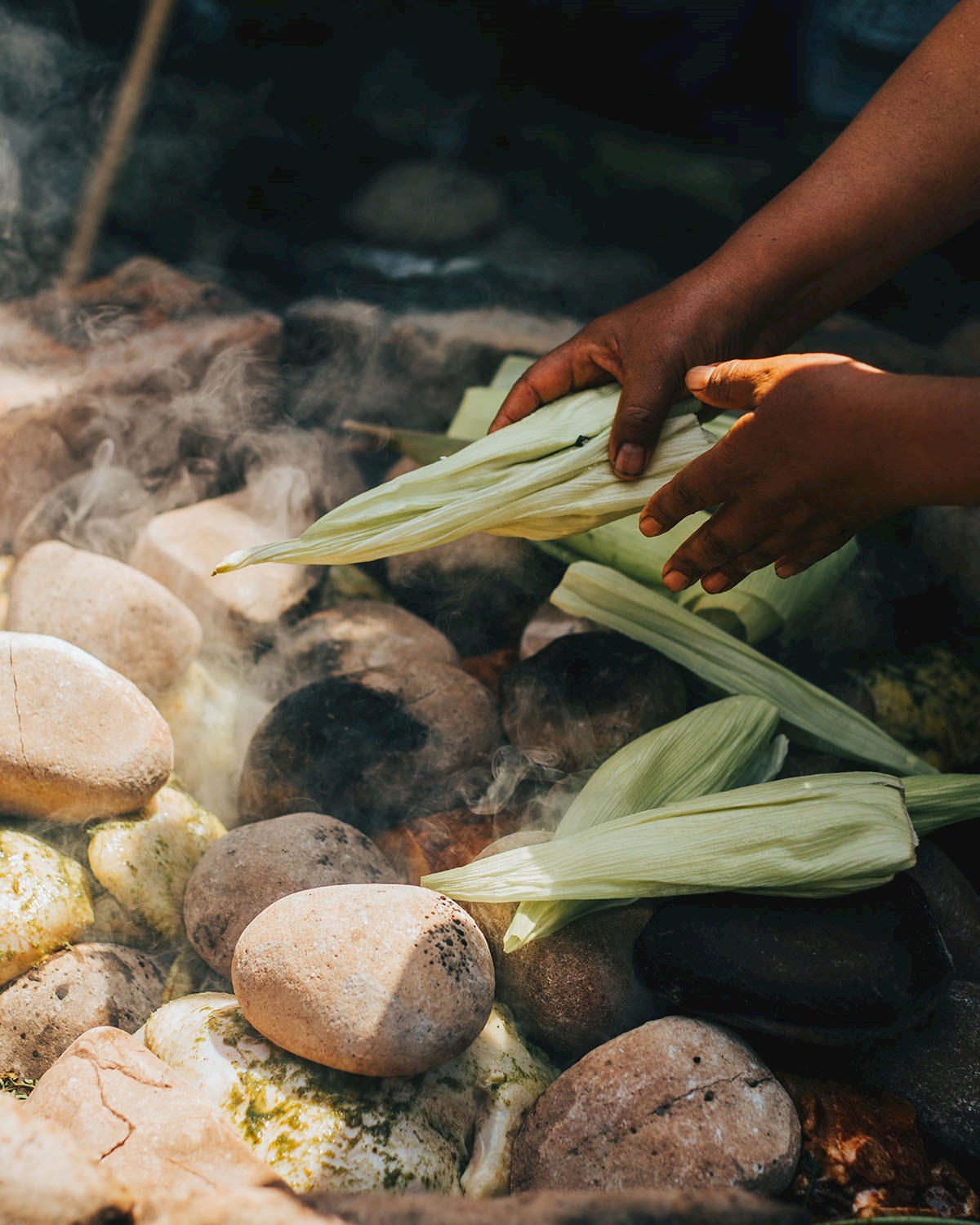 Pachamanca is an elaborate process with a tasty outcome - Credits: Shutterstock
Pachamanca is an elaborate process with a tasty outcome - Credits: Shutterstock
Once the heart of the Incan Empire, Cusco is a city where history seeps around every corner. From the cobblestone streets of San Blas to the impressive ruins of Sacsayhuamán citadel, Cusco is a vibrant mix of Incan and colonial influences. Coricancha, originally an Incan temple of the sun (and the most important temple in the whole empire), is a prime example of this blend, becoming the colonial Convent of Santo Domingo in the 17th century.
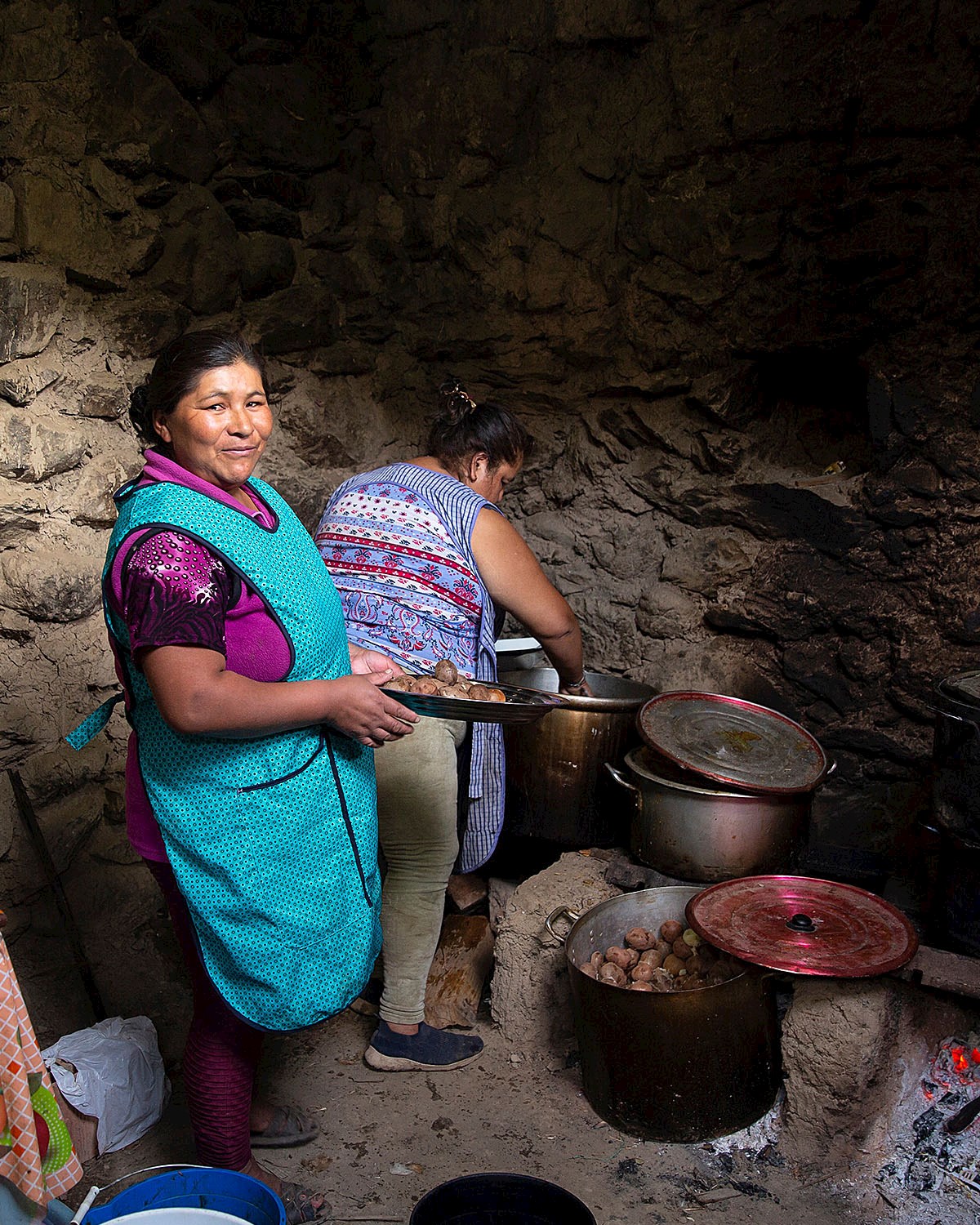 Traditional kitchen in the southern part of the Peruvian Andes - Credits: Shutterstock
Traditional kitchen in the southern part of the Peruvian Andes - Credits: Shutterstock
Often referred to as the 'sister' of Machu Picchu, Choquequirao is a remote archaeological site that sees only a fraction of Machu Picchu's visitors. Requiring a challenging trek to reach, it rewards adventurous travelers with its sprawling ruins and a sense of undiscovered wonder.
 Traditional Andean dish Yuyo, a popular street food - Credits: Shutterstock
Traditional Andean dish Yuyo, a popular street food - Credits: Shutterstock
The city of Huaraz serves as the gateway to the Cordillera Blanca, a breathtaking range within the Andes known for its snow-capped peaks and pristine glacial lakes. Huascarán National Park offers numerous trekking routes, with Laguna 69 being a favorite amongst many for its turquoise waters set against a dramatic mountain backdrop.
Finally, lying at the crossroads of Peru and Bolivia, Lake Titicaca is more than just a vast expanse of blue. The floating Uros Islands, made entirely from totora reeds, and the terraced beauty of Taquile Island, are just some of the wonders one might encounter while traveling through this great lake region.
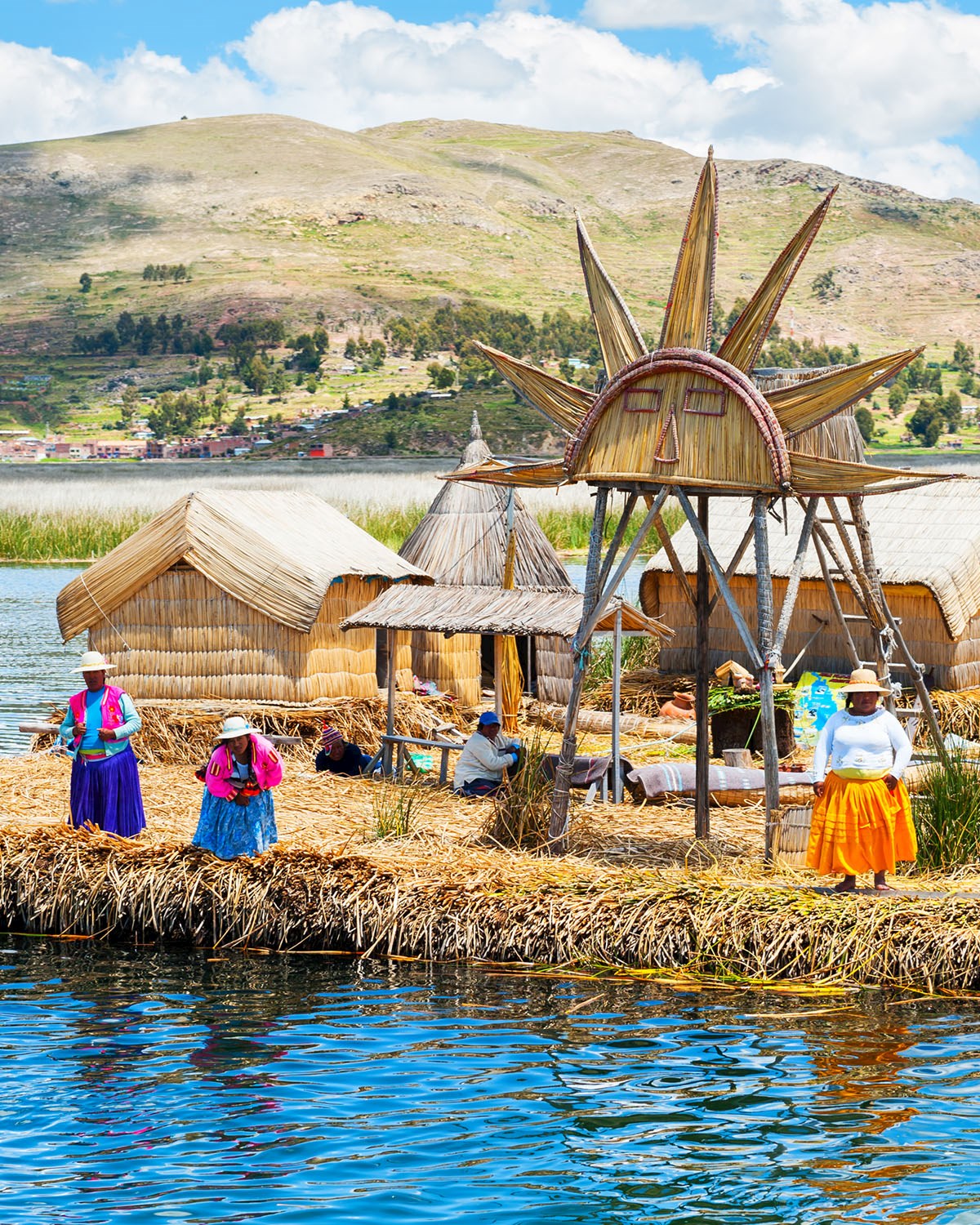 Uros floating islands on the lake Titicaca - Credits: Shutterstock
Uros floating islands on the lake Titicaca - Credits: Shutterstock
Savoring the Peruvian Andes
The Peruvian Andes, with its majestic peaks and lush valleys, are more than just a geographical marvel. It's a culinary treasure trove, where ancient Incan traditions intertwine with more colonial gastronomy. This is the region that gave us potatoes and quinoa, but it can offer so much more.
• SOPA DE QUINUA
Sopa de quinua is a hearty and nutritious soup originating from the Andean region of Peru. The main ingredient is quinoa, an ancient grain revered as the "mother grain" by the Inca civilization, now hailed as a global superfood. Combined with vegetables like carrots, peas, and potatoes, and sometimes enriched with chicken or beef, this soup embodies the comforting warmth of Andean home cooking.
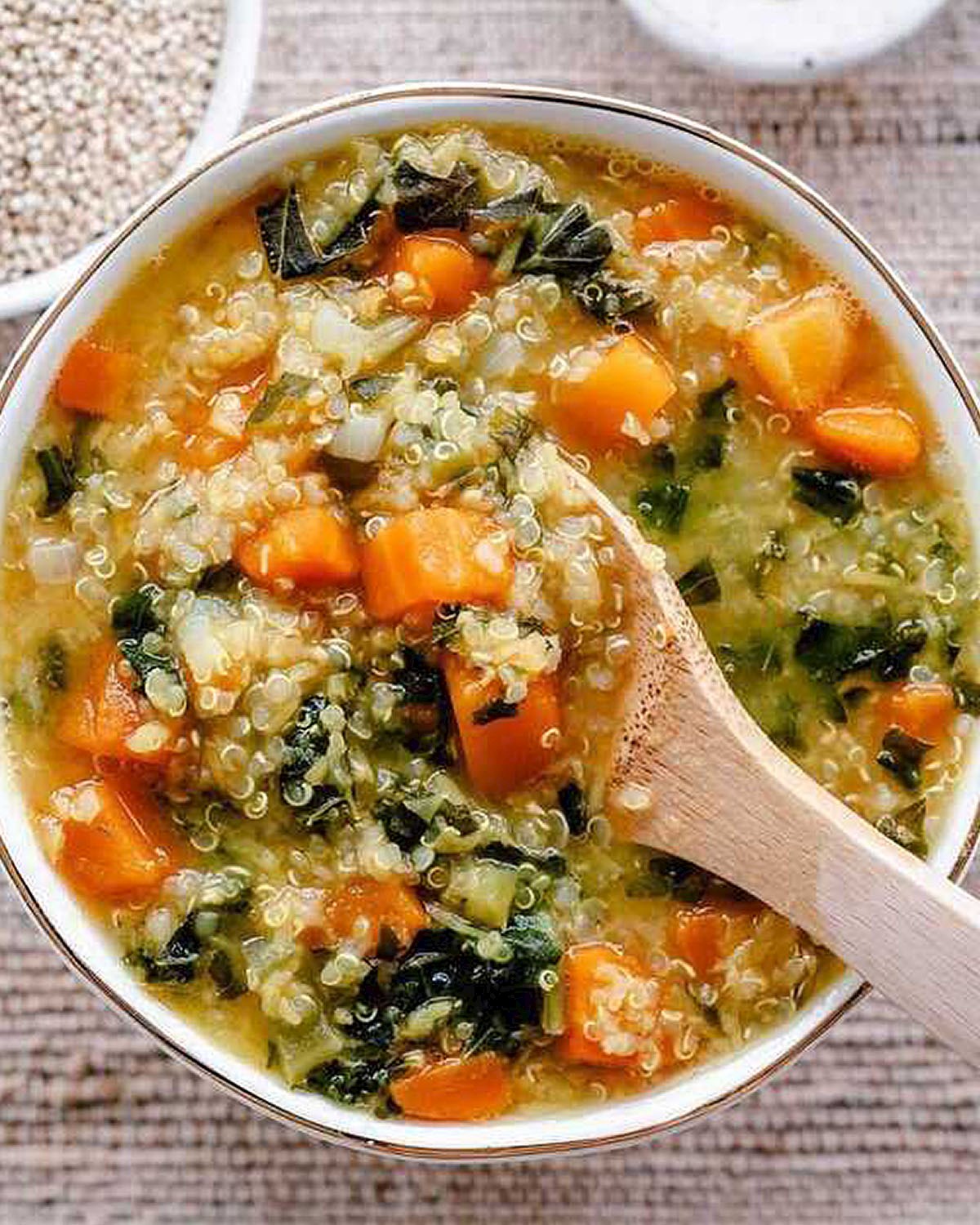 Sopa de quinua - Credits: Biotona
Sopa de quinua - Credits: Biotona
Learn more about Sopa de quinua
• CUY FRITO
Cuy frito, or fried guinea pig, is a traditional delicacy of the Peruvian Andes that has been consumed for hundreds of years. Often reserved for special occasions and festivals, guinea pig is prized for its tender meat and unique flavor. The preparation involves marinating the guinea pig in a blend of spices, and deep-frying it until crispy and golden. Served alongside potatoes, salad, or corn, cuy frito is a dish that truly honors ancient culinary traditions.
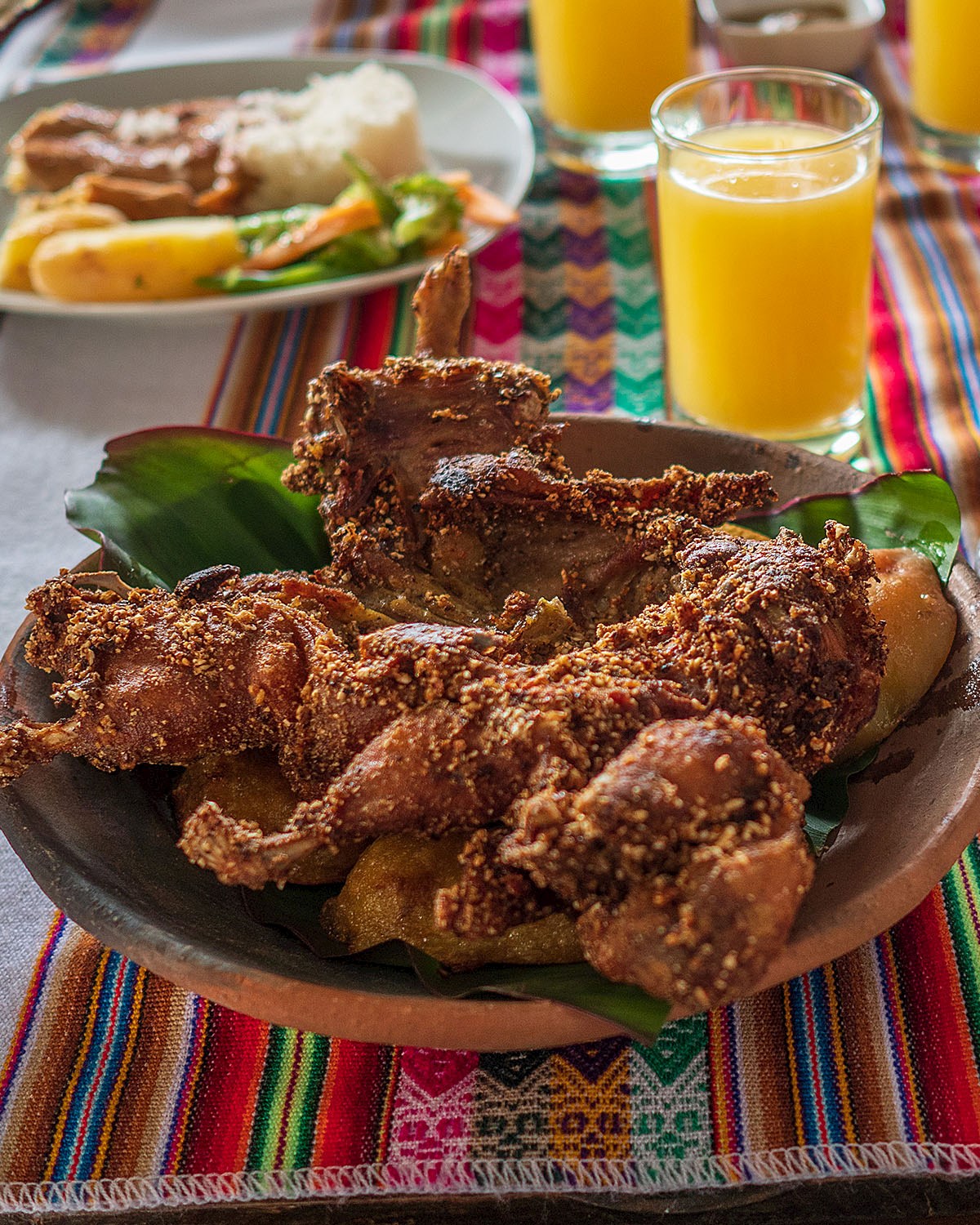 Cuy frito - Credits: Shutterstock
Cuy frito - Credits: Shutterstock
• PACHAMANCA
Pachamanca is a traditional Andean cooking method deeply rooted in Peruvian indigenous culture, symbolizing the harmonious bond between humans and the Earth. The word 'pachamanca' translates to "earth pot" in Quechua, which perfectly illustrates this rather unusual technique. A variety of meats like lamb, pork, and chicken, alongside potatoes, corn, and broad beans, are marinated in aromatic Andean spices and placed atop hot stones in a ground pit called huatia. The ingredients are covered with leaves in order to create a natural pot in the ground and cooked for three hours, ensuring the fusion of all the flavors.
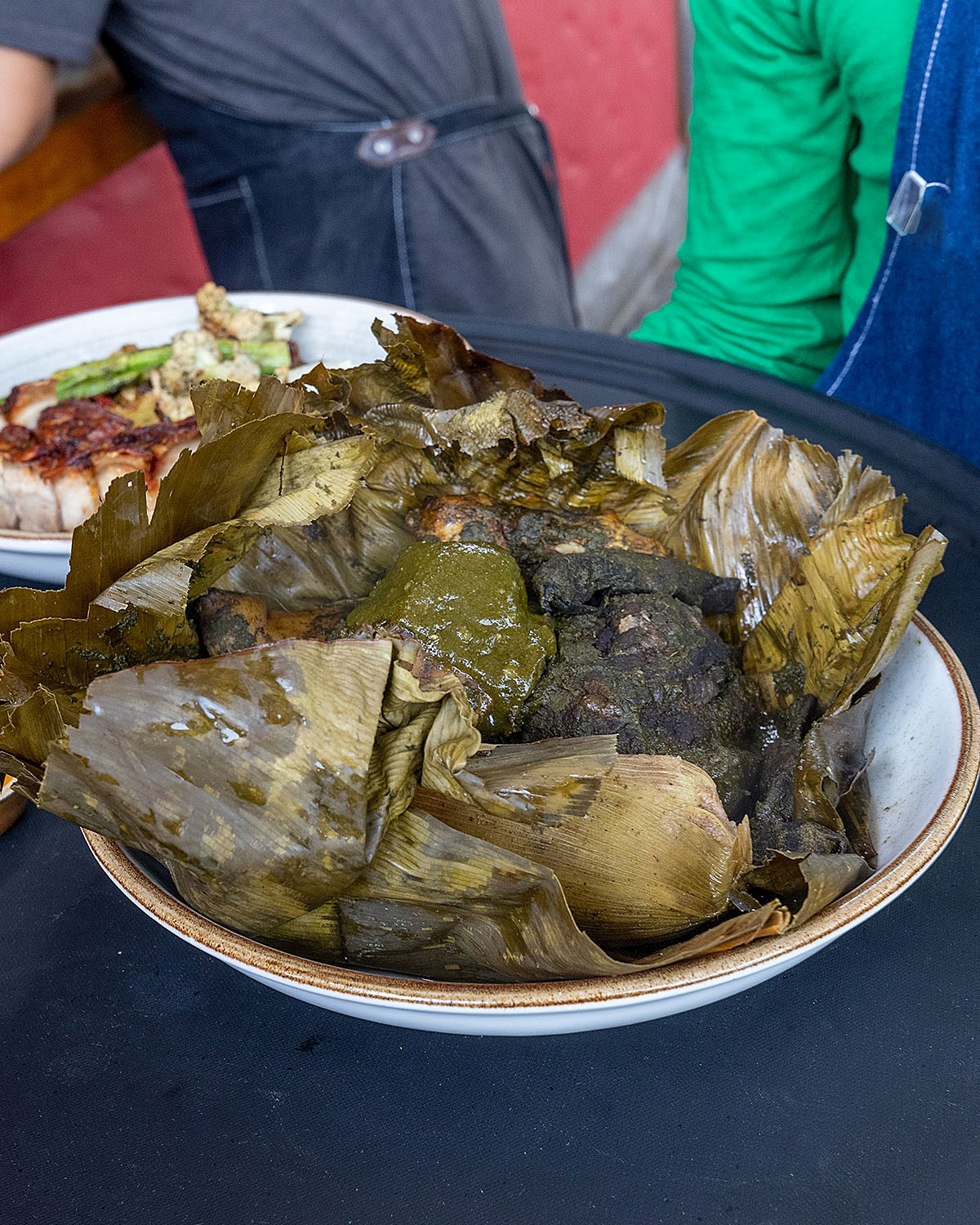 Pachamanca - Credits: Shutterstock
Pachamanca - Credits: Shutterstock
• CHOCLO CON QUESO
Choclo con queso, translating to "corn with cheese", is a beloved street food and side dish found predominantly in the Peruvian highlands. The "choclo" used is a large-kernel variety of corn indigenous to the Andes, known for its sweet and chewy texture. It's typically boiled or steamed to tender perfection and then paired with a slice of fresh, salty Andean cheese. Although it can be found in restaurants, this delicious snack is most commonly bought from street vendors.
 Choclo con queso - Credits: 𝖳𝗋𝖾𝗂𝗌𝗒 ☽
Choclo con queso - Credits: 𝖳𝗋𝖾𝗂𝗌𝗒 ☽
Learn more about Choclo con queso
• APANADO DE ALPACA
Apanado de alpaca is an exquisite local dish that highlights the tender meat of the alpaca, an animal indigenous to the Andes mountains. The alpaca meat is seasoned with a blend of spices, then breaded and fried until it achieves a golden-brown, crispy exterior, similar to a Wiener schnitzel. Served with potatoes or rice and a fresh salad, apanado de alpaca is a dish hardly found anywhere else in the world.
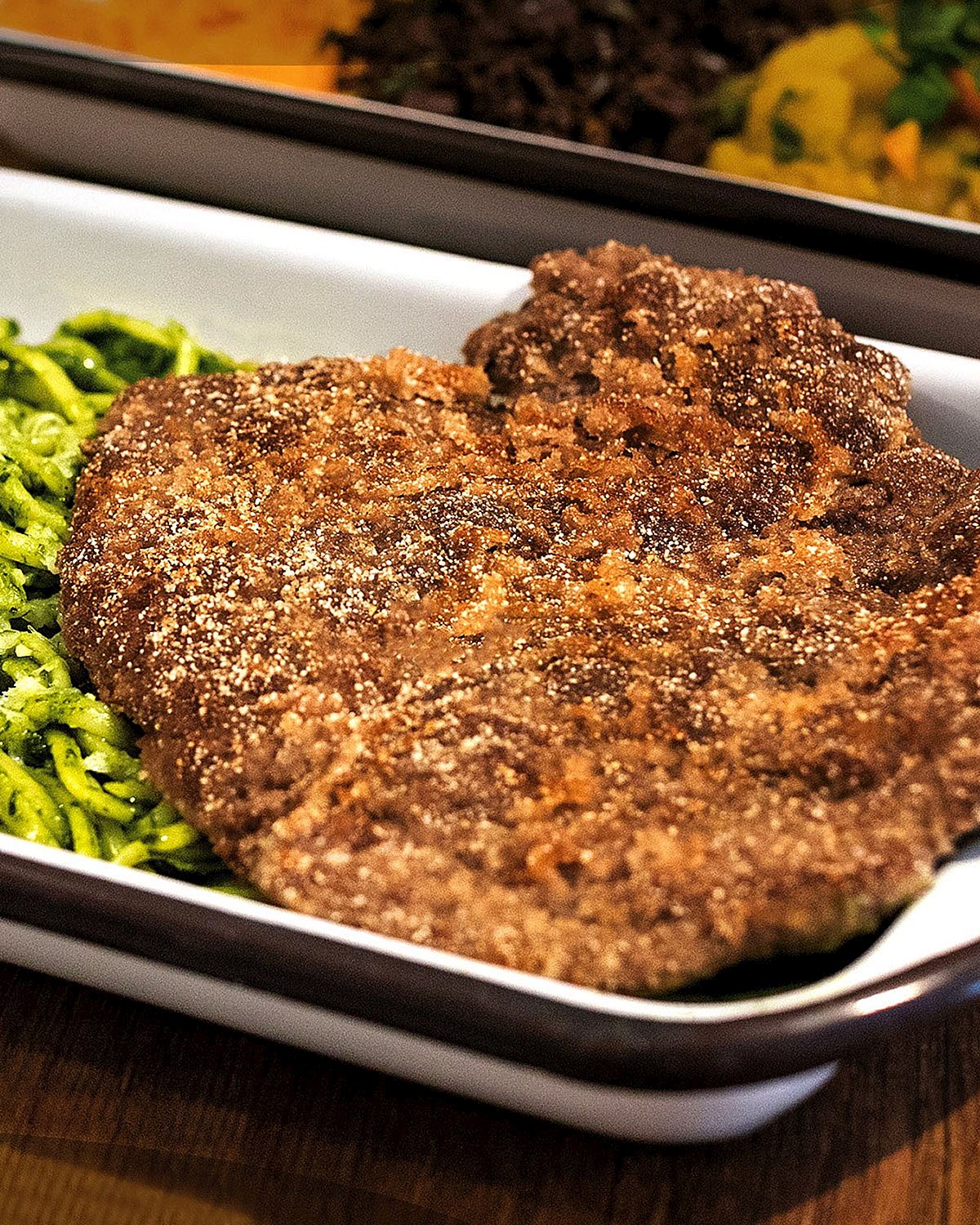 Apanado de alpaca - Credits: MUU Comedor Bar
Apanado de alpaca - Credits: MUU Comedor Bar
Learn more about Apanado de alpaca
• PUCA PICANTE
Puca picante is a traditional Peruvian stew originating from the region of Ayacucho. It is made with a combination of beets, peanuts, potatoes, onions, garlic, aji panca paste, and cumin. If desired, the stew can be enriched with the addition of beef, pork, or chicken. In Quechua, puca means red, referring to the vibrant color of this stew, while picante means spicy, so the name of the dish can be translated as spicy red. It is recommended to serve this delicious stew with rice or a green salad on the side.
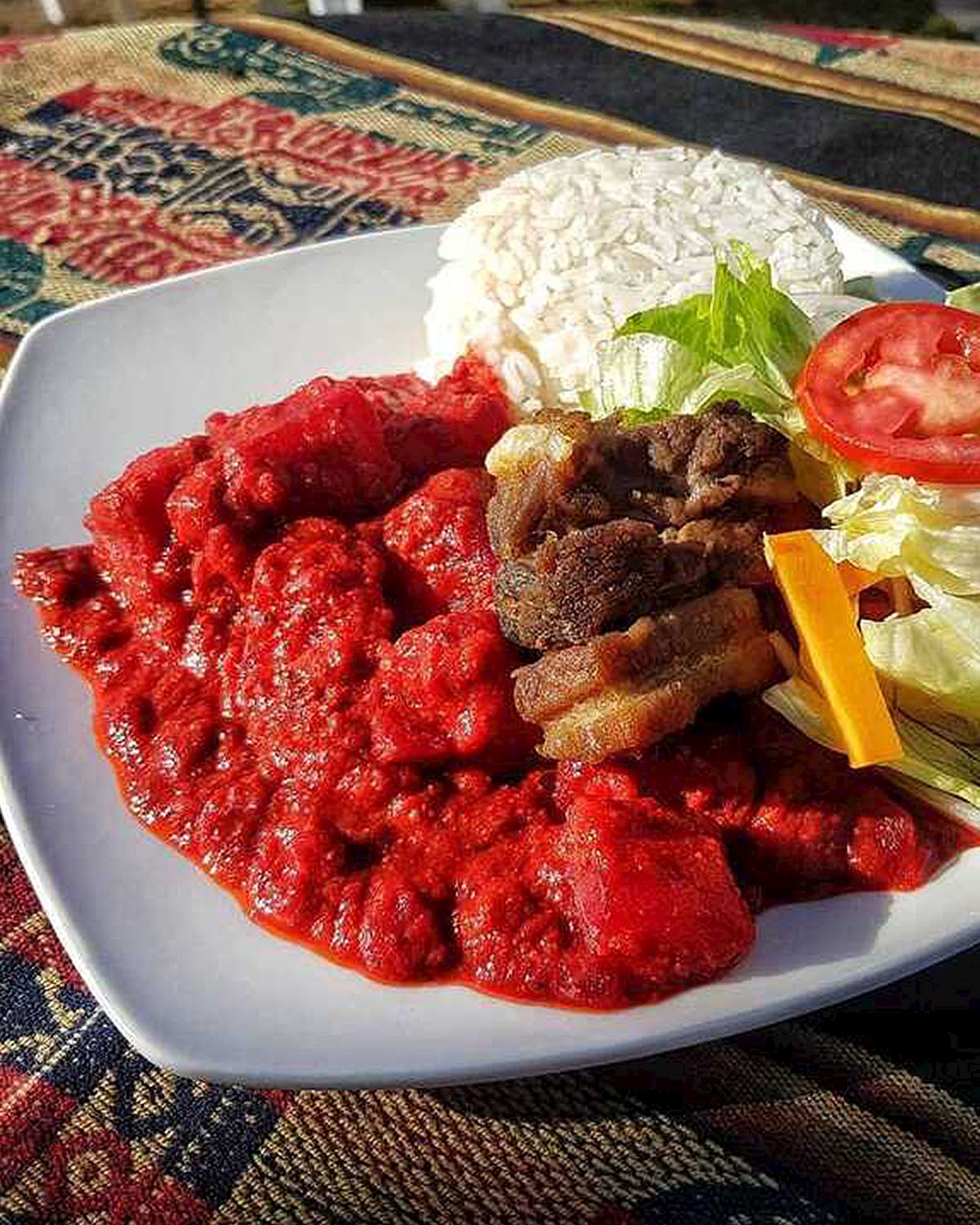 Puca picante - Credits: Welcome to Ayacucho
Puca picante - Credits: Welcome to Ayacucho
• CHICHA MORADA
Chicha morada is a traditional Peruvian beverage made from native purple corn, giving it its distinctive deep violet hue. Boiled with pineapple peels, cinnamon, and cloves, this drink offers a delightful mix of sweet and tangy flavors. Often enjoyed chilled with a splash of lime and garnished with diced apple or pineapple, it's a staple in the daily life of the locals. Beyond its delightful taste, chicha morada is also celebrated for its potential antioxidant properties, derived from the anthocyanins in the purple corn.
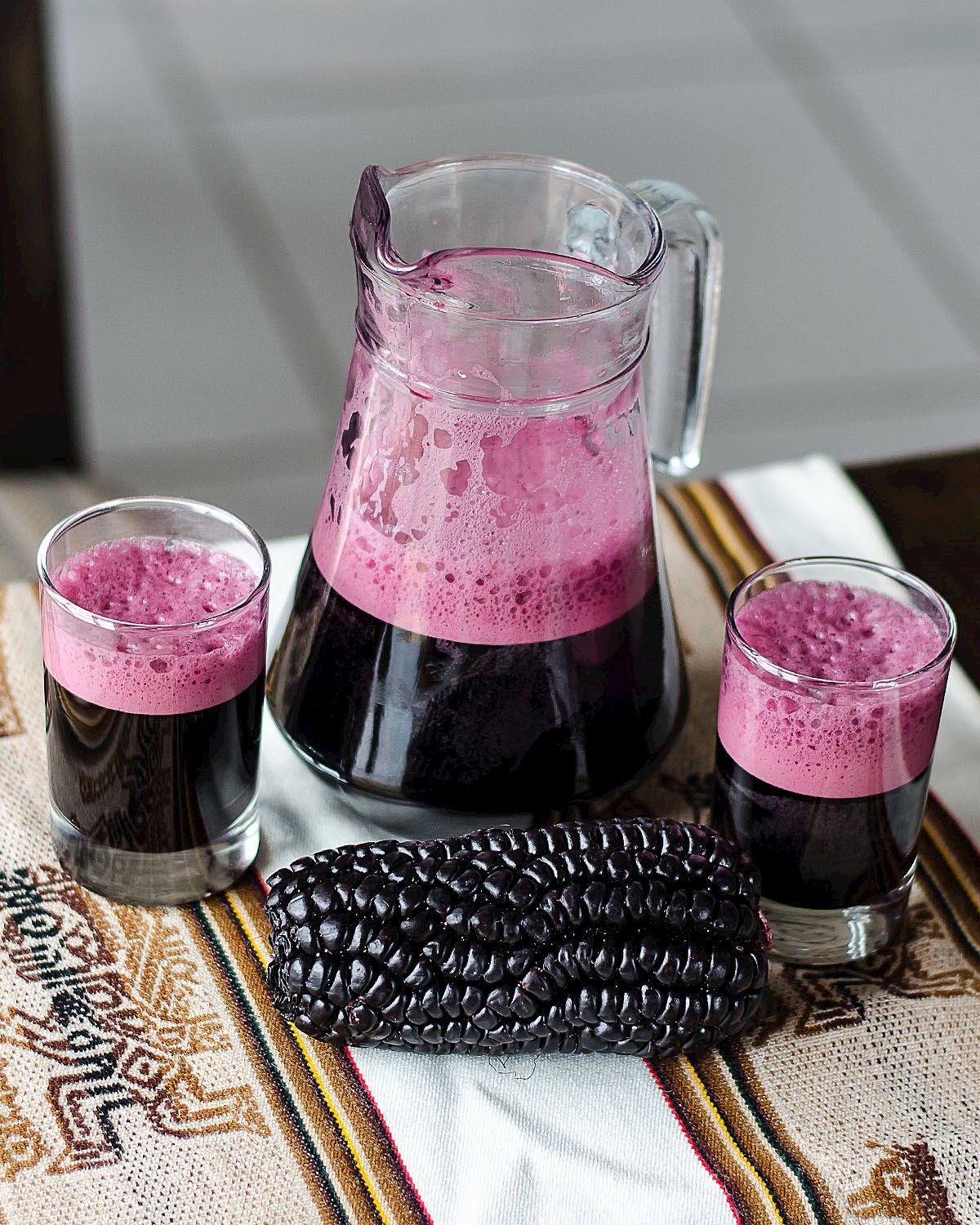 Chicha morada - Credits: Shutterstock
Chicha morada - Credits: Shutterstock
Learn more about Chicha morada
As the cuisine itself, the Andean region has a variety of excellent traditional restaurants that cherish ancient cooking techniques and dishes.
Mojsa Restaurant in Puno is a beloved culinary destination, renowned for its expertly crafted Andean dishes with a touch of Lake Titicaca gastronomy, making it a must-visit for those seeking an authentic Puno dining experience. El Pez Loco in Cajamarca is a no-frills joint with a menu rich in local flavors, offering a playful twist on traditional northern Peruvian cuisine.
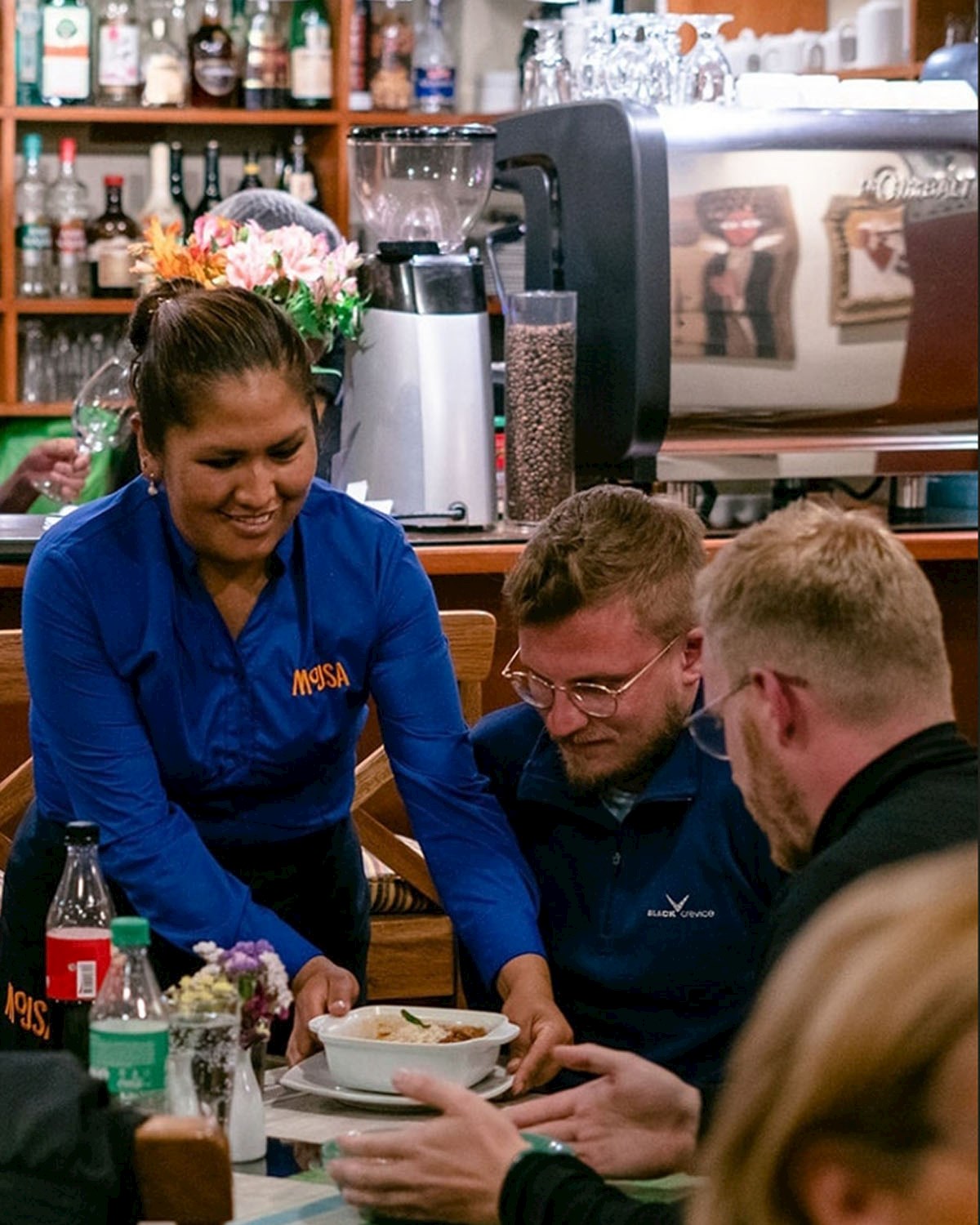 Mojsa Restaurante offers traditional Andean specialties - Credits: Mojsa Restaurante
Mojsa Restaurante offers traditional Andean specialties - Credits: Mojsa Restaurante
Restaurant Sumaqcha is a celebrated gem in Cusco, where patrons rave about the traditional Cusquenian cuisine served amidst rustic and warm interiors, providing an immersive cultural and gastronomic experience. Pachapapa, tucked away in Cusco's bohemian San Blas district, is famous for its succulent cuy (guinea pig), offering a quaint courtyard setting that's perfect for a relaxed meal under the Andean sky. Lastly, Quinta Eulalia in Cusco is a historic institution, serving hearty, home-style Andean dishes in a traditional hacienda environment that has been welcoming guests for generations.
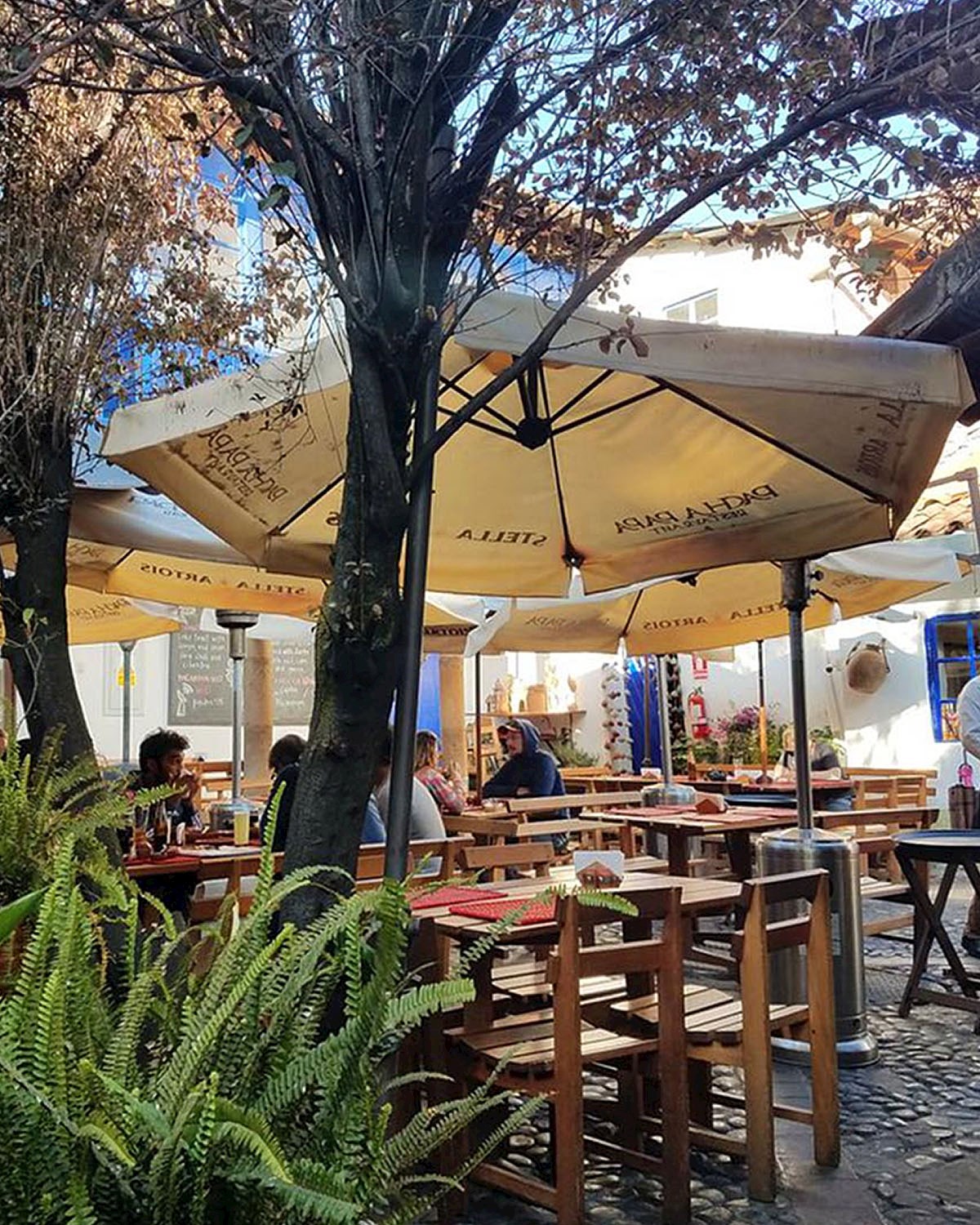 Pachapapa is one of the best places to try cuy - Credits: PACHAPAPA
Pachapapa is one of the best places to try cuy - Credits: PACHAPAPA
What and where to eat in the Cajamarca Region
What and where to eat in the Huánuco Region
What and where to eat in the Pasco Region
What and where to eat in the Cusco Region
What and where to eat in the Puno Region
What and where to eat in the Ayacucho Region
Learn more about the Peruvian Andes

